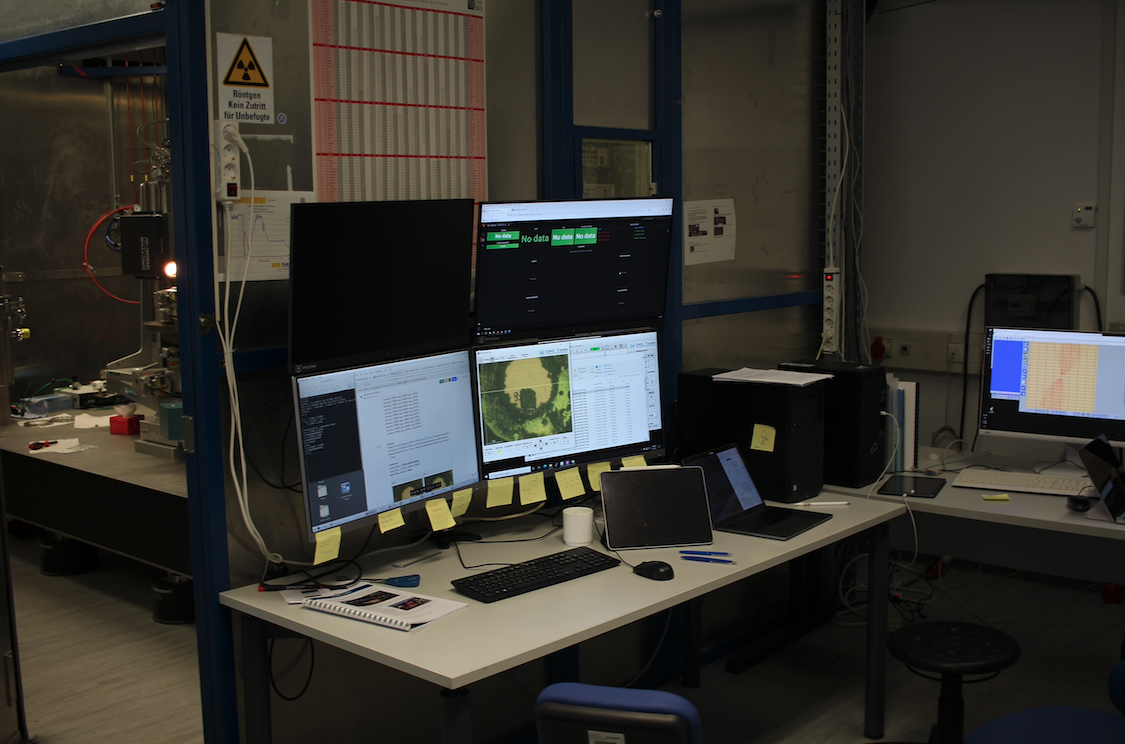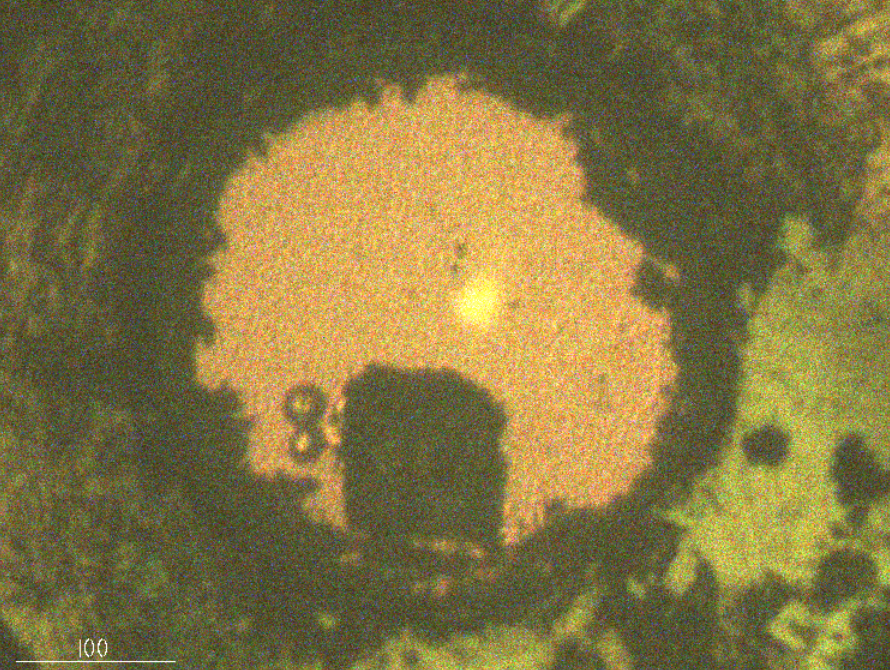VEGA
This week we are running a first “routine” experiment on the new X-ray instrument VEGA of Jochen Geck’s group (Physics of Quantum Materials), here at IFMP. This custom-designed x-ray diffractometer was constructed inside a lead hutch, with the same mechanical components and detector you would find at a synchrotron. The instrument is built around a Molybdenum x-ray tube and focusing x-ray optics that allow us to choose between the Mo K-alpha and K-beta emission lines (one offers more intensity, the other higher resolution).
We are combining this with a closed-cycle refrigerator that holds a miniature pressure cell. This cryostat has large transparent windows, but we’re still able to reach a base temperature of 13 K. The luxurious CdTe x-ray area detector has an extreme dynamic range, which allows us to observe tiny charge density waves right next to strong structural Bragg reflections.
To determine the pressure that the sample is currently experiencing between the diamond anvils, we mount a laser spectrometer in front of the window. We have placed tiny ruby crystals right next to our sample, which start fluorescing in the green laser light. By resolving small frequency shifts in this fluorescence, we can track the pressure with high accuracy.



Building this instrument (both hardware and software) was no small feat, and was somewhat delayed by the Covid pandemic. It’s quite exciting that this equipment seems to be running without problems now (knock on wood). The current measurements allow us to calibrate the thermal pressure variations of our pressure cells and will be the ideal preparation for a synchrotron experiment planned for mid-April.
